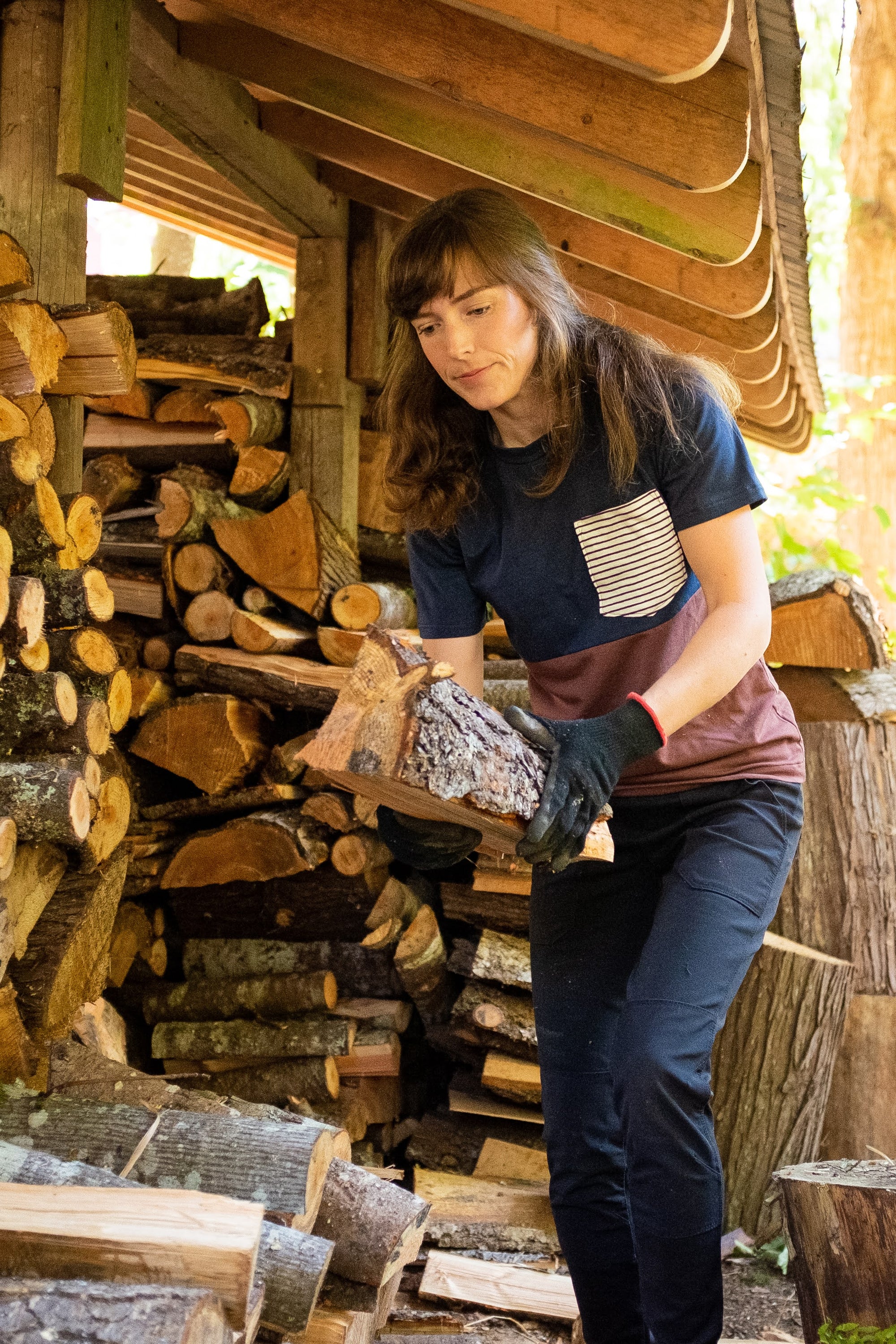
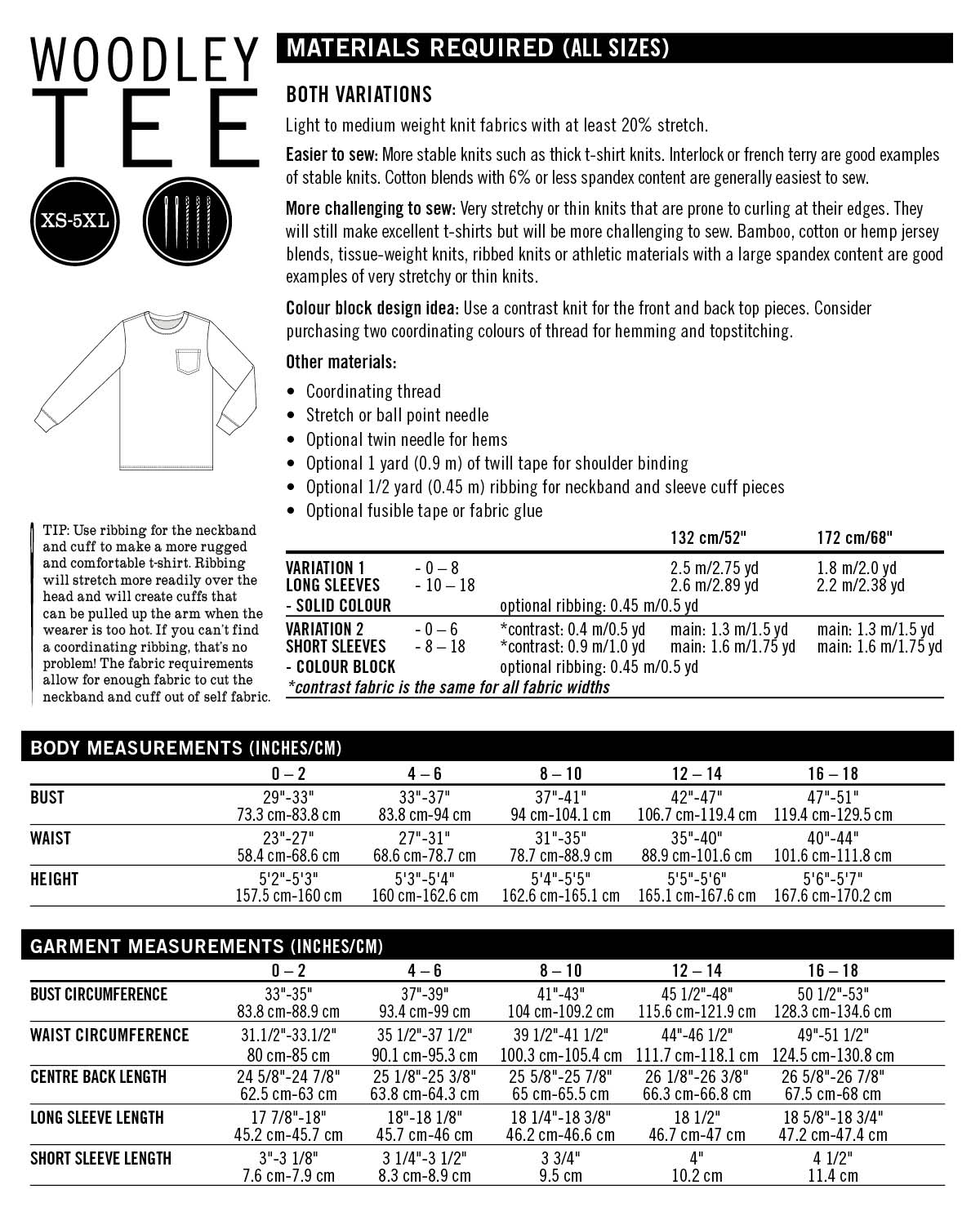

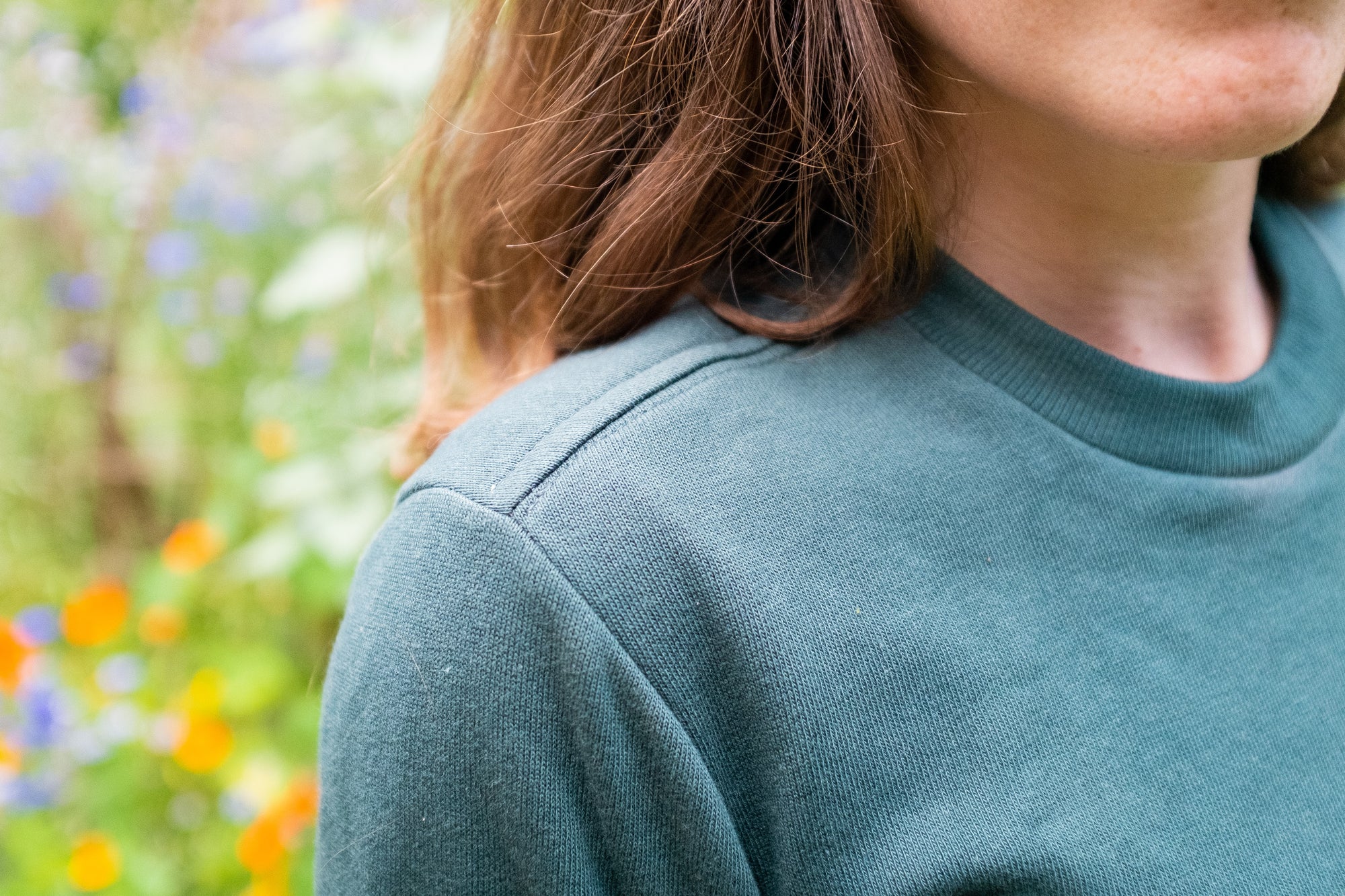
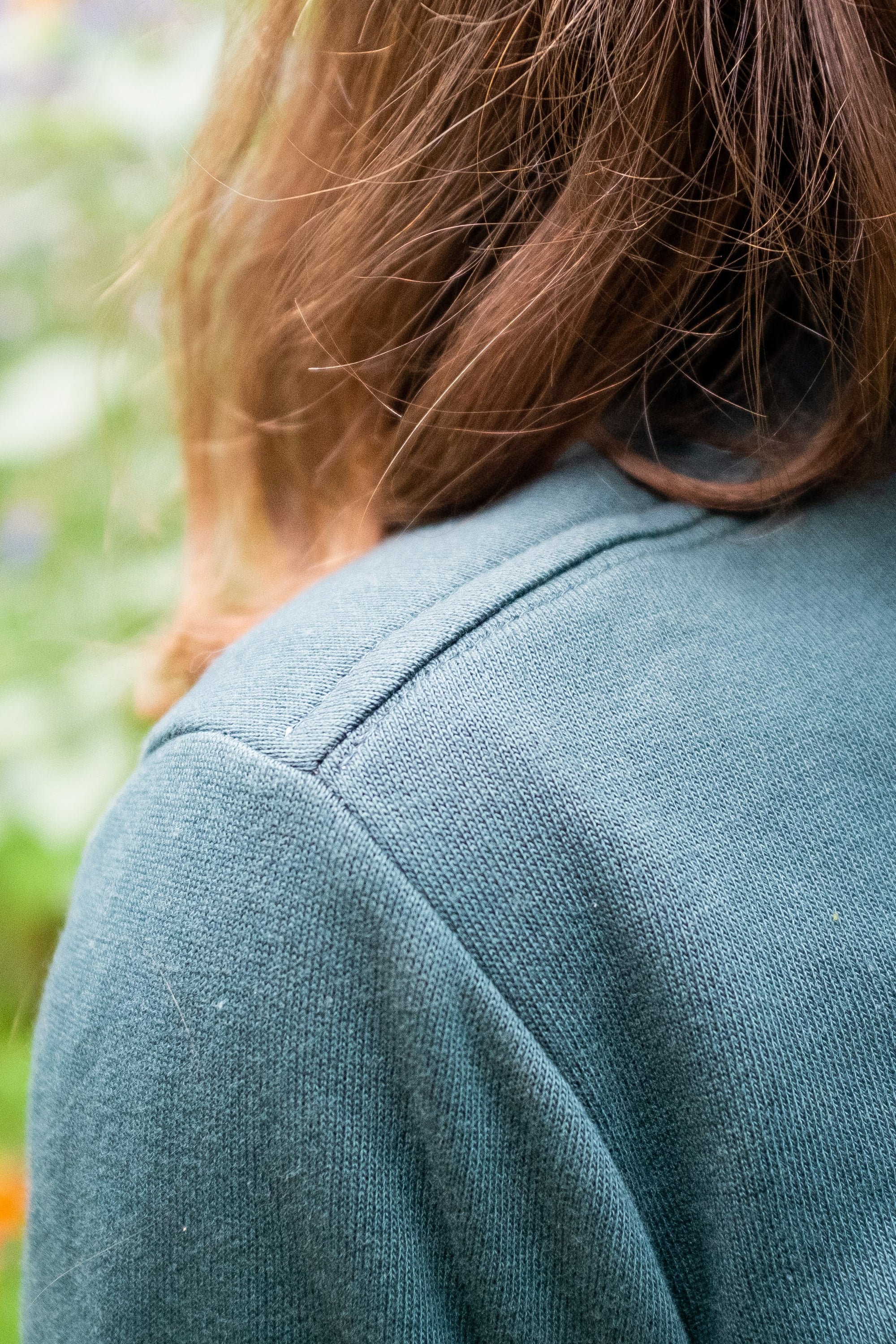
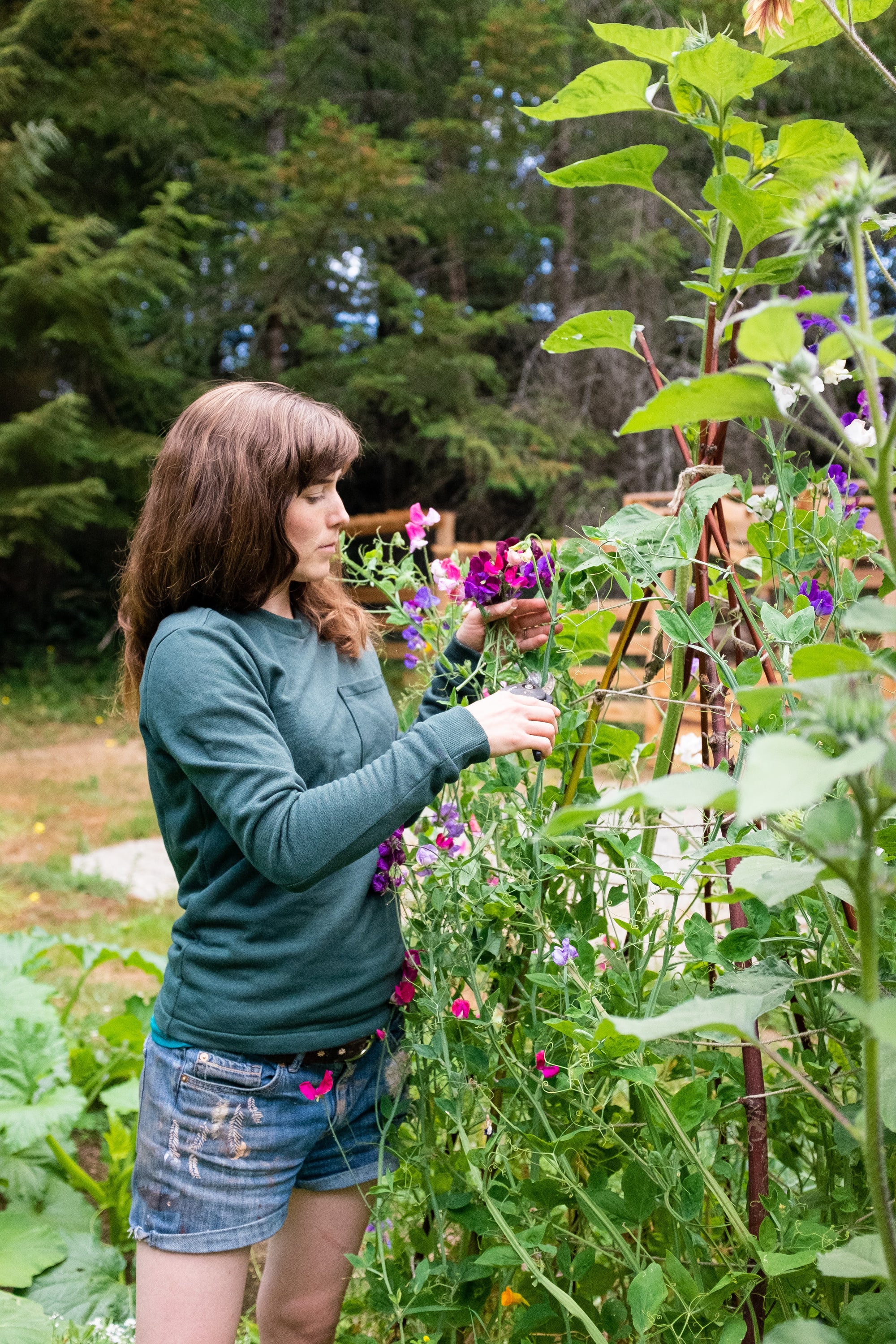
PDF Pattern - Woodley Tee - Women's Sizing | Thread Theory
- PDF Files only = all digital files are emailed to you.
- PDF Files AND Print Service = Same as above AND A0 printed pattern sheets are posted to you.
Note: The print service does not include printing of the instruction pages.
A classic relaxed fit t-shirt sewing pattern to fill your wardrobe with comfortable basics. This pattern is meticulously drafted to include a nicely fitted neckband, perfectly shaped armscye, and a long enough body to tuck in or leave untucked as desired. The sleeves are roomy enough to move unrestricted but are by no means baggy. Choose between short or long sleeves (finished with cuffs). Sew from one colour or use the colour-blocked pieces. Add or leave off the chest pocket.
Instructions for sewing with knits are thorough and include finishing suggestions, step-by-step illustrations and both beginner or intermediate sewing options. They explain methods for sewing the shirt with or without a serger. Fabric requirement charts are provided for a monochrome shirt or a colour-blocked shirt as well as for self-fabric or ribbed neck bands and cuffs.
Skill level: Adventurous Beginner.
Sizing: 0 – 18 (see sizing chart with the pictures below).
For sizing, yardage requirements & finished garment measurements, click here.
Fabric suggestions:Light to medium weight knit fabrics with at least 20% stretch.
Easier to sew: More stable knits such as thick t-shirt knits. Interlock or french terry are good examples of stable knits. Cotton blends with 6% or less spandex content are generally easiest to sew.
More challenging to sew: Very stretchy or thin knits that are prone to curling at their edges. They will still make excellent t-shirts but will be more challenging to sew. Bamboo, cotton or hemp jersey blends, tissue-weight knits, ribbed knits, or athletic materials with a large spandex content are good examples of very stretchy or thin knits.
Colour block design idea: Use a contrast knit for the front and back top pieces. Consider purchasing two coordinating colours of thread for hemming and topstitching.
